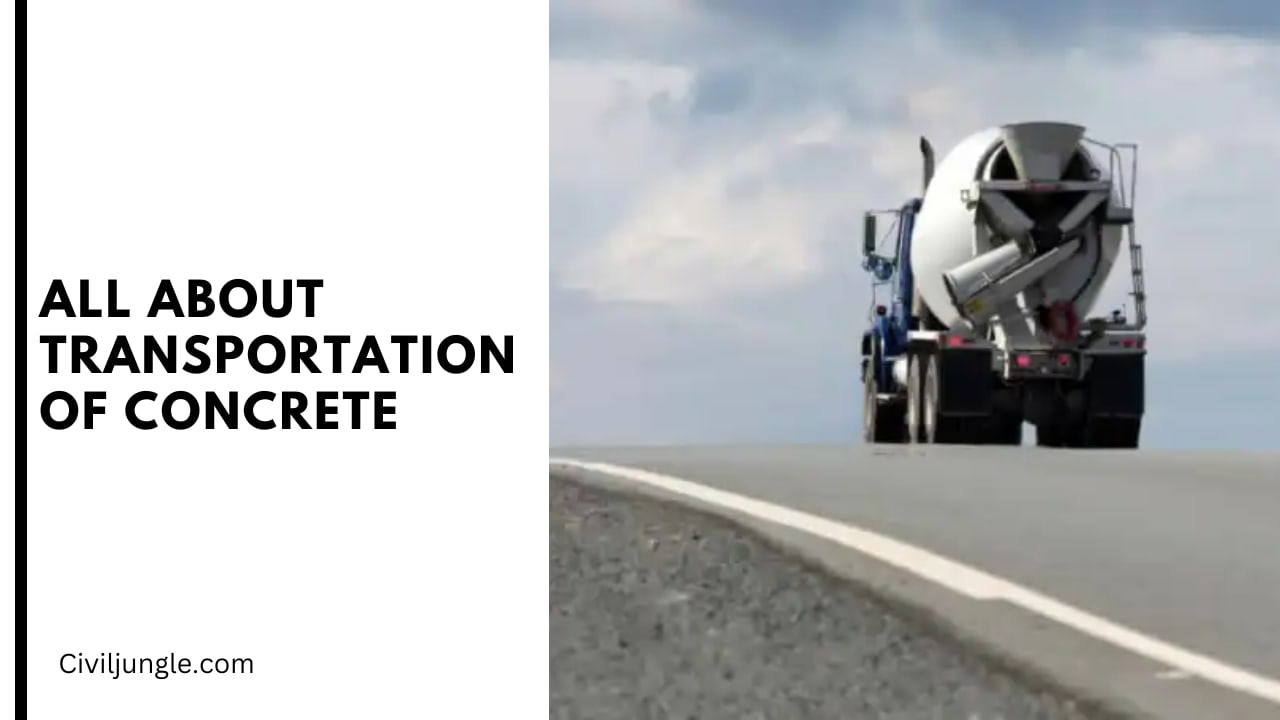
What Is Transportation of Concrete?
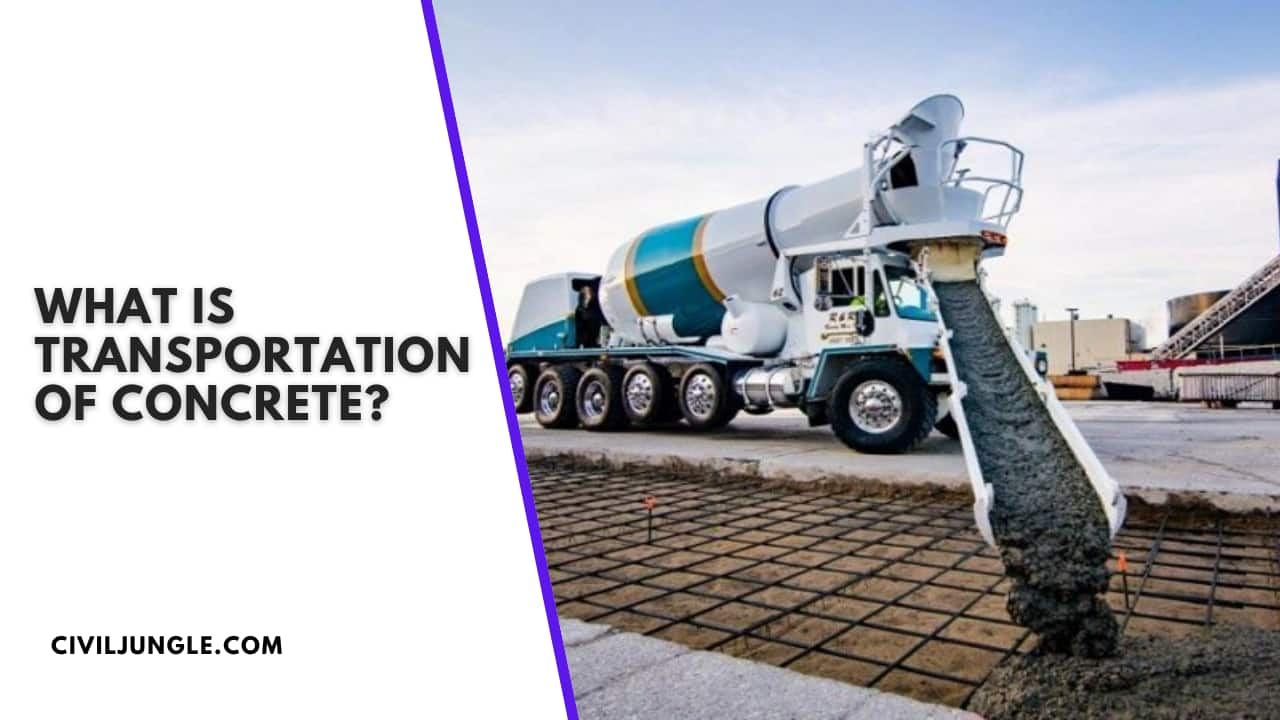
Transportation of concrete is a process where we move freshly prepared concrete from one place to another place. Generally, we move concrete to that place where that concrete need to be dumped for structural construction purpose.
The method of transportation of concrete depends upon the setting time of concrete, workability of the concrete, and the labour availability of the site, etc.
Sometimes, we add admixtures into the concrete to improve some specific properties of concrete. You need to remember that the homogeneity of the concrete must be maintained.
Methods for Transportation of Concrete
There are generally 9 types of transportation methods are available, those are below-
1. Mortar Pan
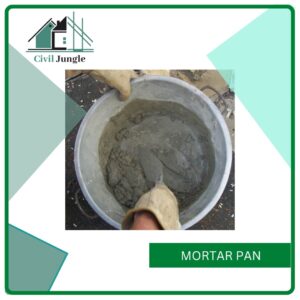
Mortar pan is a very common type of transportation system of concrete, and it is widely used in small construction sites where the concrete requirement is less.
This method requires more labor, but in this method, there is a very lower chance of segregation. In this method, the concrete surface tends to dry and becomes thick in those portions.
Here, water loss was observed due to exposed weather conditions. This type of method is adopted for ground-level work, above ground level work, or below ground level work. The one thing you should remember is that the pan must be wetted at first and need to be cleaned before starting any operation.
2. Bucket, Crane & Ropeway

Bucket and cranes are one of the most important transportation methods, specially for those construction sites which is above ground level.
Generally, for upper level construction projects, cranes are the first preference of engineers. Cranes can move concrete in the horizontal direction as well as the vertical direction, and they can place the concrete in a particular direction.
Naturally, cranes carry buckets, which contain concrete, and it has a door at the lower portion. The ropeway is used in those places traditional transportation method of concrete is not possible.
Here, different sizes of buckets are used for transportation according to construction. The ropeway method is useful for valley works, bridge works, etc. In this system, concrete does not lose its workability.
The bucket size of this method is considerably larger than other methods. In this system, the one thing you need to remember that the fall height of the concrete. If it increases, then the possibility of segregation of concrete will be happened.
3. Hand Cut or Wheel Barrow
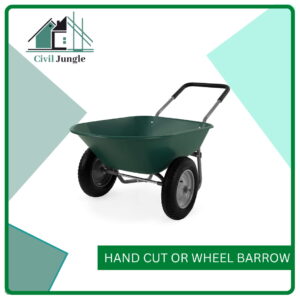
This type of construction method is used at the ground level works like road construction and other ground constructions.
In this system, the segregation of concrete happens if the carts are driven on a rough road for a long time. We can reduce the vibration problem if we use pneumatic tires instead of steel tires.
4. Belt Conveyor
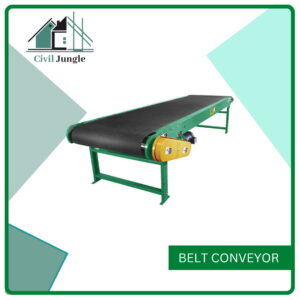
Only in a few places belt conveyor is used because it causes segregation on steep slopes, direction change points, roller points, etc. In a belt conveyor system, segregation also happens due to the continuous vibration of the conveyor belt. In modern days, adjustable speed belt conveyors are used.
This belt conveyor can easily and quickly place a large amount of concrete from one place to another. The discharge arrangements must be set properly, otherwise, it will create a huge problem when it returns.
The one thing you should remember that you need to remix the concrete properly before pouring the final place.
5. Dumper & Truck Mixer
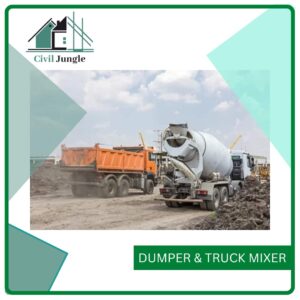
In most of cases, the concrete needs to be placed at the ground level, so a truck mixer are the best option for transporting the concrete.
Truck mixers are steel body trucks with motor-mounted drums. This system is the best option for concrete, which need to be placed at a long distance. It prevents stiffening and segregation of the concrete and improves the mixing process.
The dumper is the miniature of the truck mixer, and the capacity of the truck mixer is a 4-meter cube, and the carrying capacity of the dumper is 2 to 3-meter cube. Before loading the operation, you need to clean and wet the inside wall of the dumper from inside.
6. Skip & Hoist
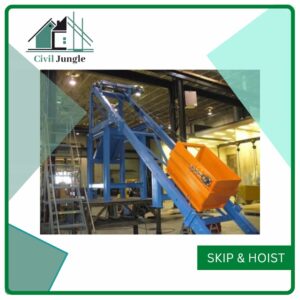
For vertical transportation, this system of vehicles is widely used. In this system, the concrete is filled up into the skip, and it starts moving through rails. Please avoid turning because it creates segregation.
This type of system is adopted for more than 4-story buildings where mortar pan and ladder system is next to impossible. It travels to the pouring place, and concrete will be discharged manually or automatically.
7. Chute
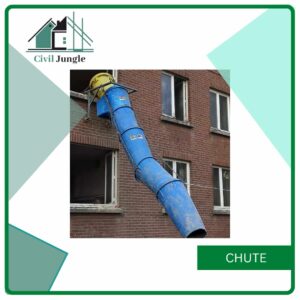
This system is used to pour the concrete in a deep location. In this method, the workability of the concrete should net change. This is used for field purposes but it is not a very good scientific process.
The slope of the chute must be 1V:2.5H; if you increase or decrease the slope then concrete will not move smoothly.
8. Transit Mixer
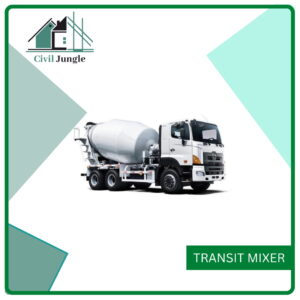
Transit mixer is widely used in nowadays. It is frequently used by ready-mix concrete plants. Generally, transit mixers are truck-mounted drums which have a capacity of 4 to 7 cubic meters.
Fully loaded transit mixers have a speed of 4 to 6 revolutions per minute. Mixing of concrete is done by a transit mixer.
9. Pump and Pipe Line Method
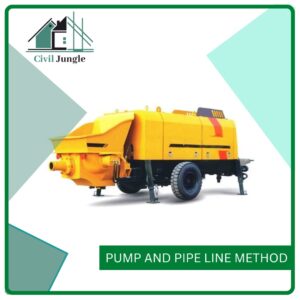
The pump and pipeline method is a unique type of method, and it’s a complicated method. It is used in those places where space is not enough, and a high quantity of concrete requires.
The rate of concrete is 8 to 70 cubic meters per hour. The horizontal distance of the pipe is approx 300 meters, and the vertical distance is approximately 90 meters.
The diameter of pipe, which is used, is 8 to 20 centimeters, and it is made of plastic, steel, or aluminum. 40 to 100 mm must be the slump vale of the pump concrete, and 0.9 to 0.95 must be the compacting factor of pumped concrete. 25% workability should be reduced because compaction is done at the point of discharge.
Frequently Asked Questions (FAQ)
What Factors Influence the Choice of Concrete Transportation Method?
The choice depends on several factors including the setting time and workability of the concrete, the distance to be covered, site conditions, and available labor. The type of construction project also plays a significant role.
How Does the Setting Time of Concrete Affect Its Transportation?
Concrete with a shorter setting time requires faster transportation to prevent it from setting before reaching its destination. Admixtures can be used to extend the setting time if necessary.
What Is the Role of Admixtures in Concrete Transportation?
Admixtures can modify the properties of concrete, such as its workability or setting time, to improve its performance during transportation and placement.
How Do I Prevent Segregation of Concrete During Transportation?
Proper handling and careful selection of transportation methods help minimize segregation. For example, using cranes and buckets carefully, avoiding rough handling, and maintaining proper mixer speeds can reduce segregation.
What Are the Advantages and Disadvantages of Using a Truck Mixer?
- Advantages: Truck mixers are efficient for long-distance transportation, prevent stiffening of concrete, and ensure consistent mixing.
- Disadvantages: They are typically more expensive and may not be suitable for all construction sites, especially where access is limited.
When Should a Belt Conveyor Be Used, and What Are Its Limitations?
Belt conveyors are useful for transporting large quantities of concrete over short to moderate distances. However, they can cause segregation on steep slopes or sharp direction changes and may require frequent remixing.
What Is the Difference Between a Dumper and a Truck Mixer?
A truck mixer has a larger capacity and is designed for mixing and transporting concrete over longer distances. A dumper is a smaller vehicle used for transporting smaller quantities of concrete, often in confined or difficult-to-access areas.
How Does the Chute System Work, and What Are Its Limitations?
The chute system is used to pour concrete into deep or hard-to-reach areas. The slope of the chute must be carefully controlled to ensure smooth flow. It may not be ideal for large volumes or long distances.
What Considerations Are There for Using a Pump and Pipeline Method?
The pump and pipeline method is useful for high-rise buildings or sites with limited access. Considerations include the maximum horizontal and vertical distances, pipe diameter, and concrete workability. This method can be complex and requires careful planning.
How Can I Ensure That Concrete Maintains Its Workability During Transportation?
Use appropriate methods and equipment, maintain proper mixing and handling practices, and consider using admixtures if needed to enhance workability and prevent premature setting.


